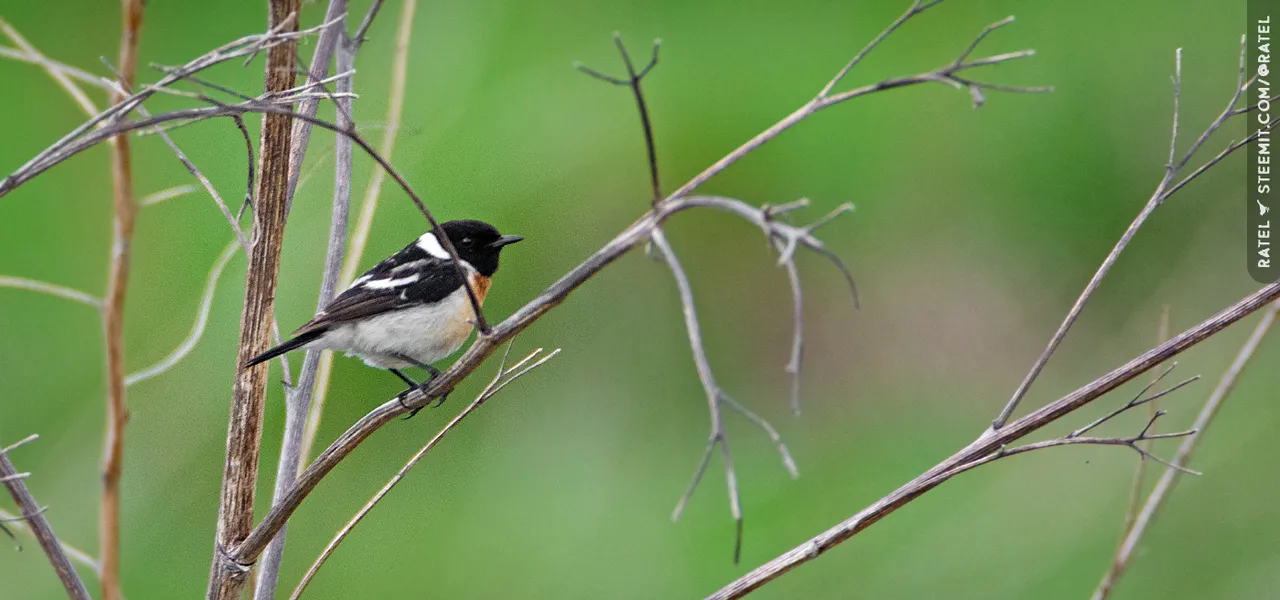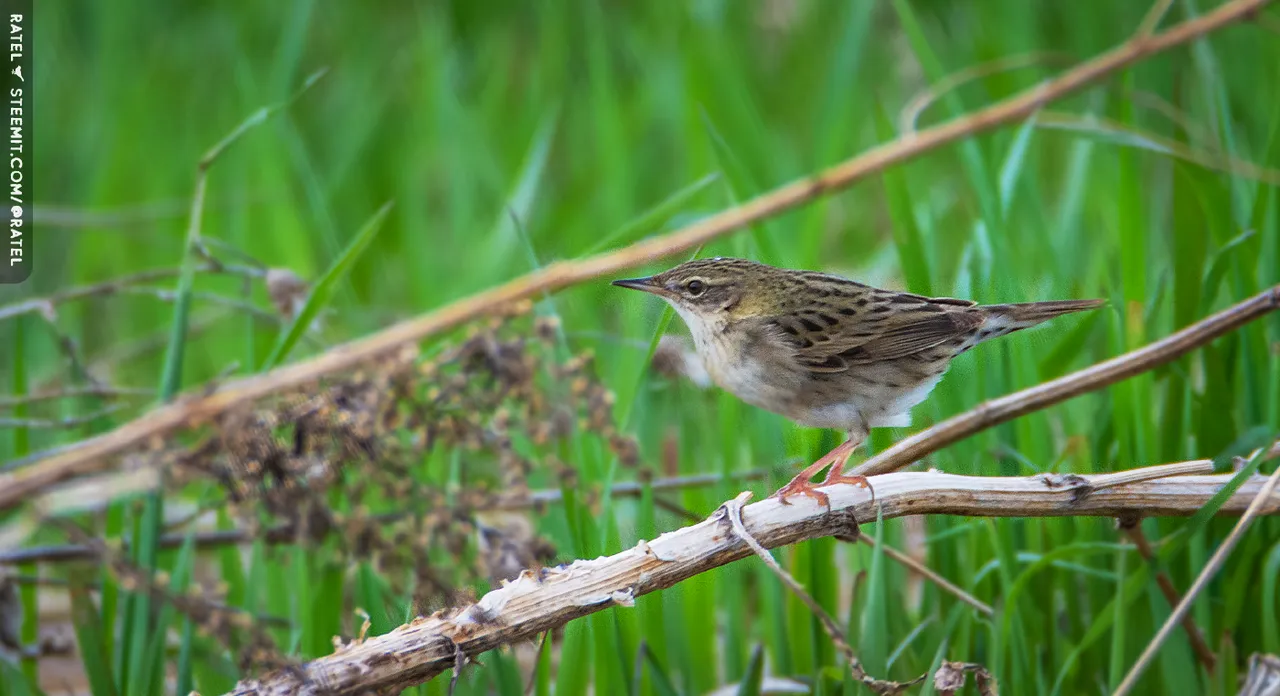The birds I meet in the meadows in early spring:

🦉 The western yellow wagtail (Motacilla flava)
📚 Motacilla lat .: mōto, mōtare move continuously, -cilla tail (cilla like a tail - only in ornithology, erroneous established name)
📚 flava flavus (lat.) yellow, gold, golden yellow
These bright birds are very often found on the outskirts of the city, in the meadows. They run along paths, sit on bushes, and search for a few food in the middle of the thawed earth. They are accustomed to humans, so it is not difficult to observe them.

🦉 The Siberian stonechat or Asian stonechat (Saxicola maurus)
📚 Saxicola (lat ): saxum rock, stone, -cola inhabitant
📚 maura (lat.): Moorish, black
These birds do not run along the paths, but they are very clearly seen sitting on the very tops of thickets or bushes. Birds inspect the territory in this way, watch out for various hazards. For example, if the female is building a nest, then the male observes the surroundings, and at the sight of danger, he reports it. Just like a meerkat.

🦉 The common grasshopper warbler (Locustella naevia)
📚 Locustella (lat.) from "locusta" - grasshopper; cricket
📚 naevia naevius lat .: naevus spot, naevius spotted
And this bird is no longer so easy to see. Very shy and rare in these places.
You can find out about her location only by hearing her song. And if you turn on the voices of these birds on the dynamics, then it will react and will definitely crawl out of the bushes.


